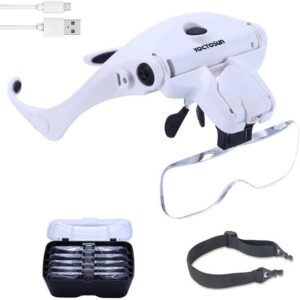The Internet of Things: A Beginner’s Guide to Connected Devices

Introduction
The Internet of Things (IoT) is revolutionising how we live and work, connecting billions of devices and appliances to the internet and enabling them to communicate with each other and external systems. From smart thermostats and security systems to industrial equipment and transportation networks, the potential uses of the IoT are virtually limitless. But as connected devices become increasingly prevalent, there are growing concerns about security, privacy, and managing the vast amounts of IoT-generated data. In this beginner’s guide, we’ll explore the exciting world of connected devices and the challenges and opportunities that lie ahead.
Background
The Internet of Things (IoT) is a network of physical objects, devices, and appliances embedded with sensors, software, and connectivity, allowing them to collect and exchange data. In addition, these connected devices can communicate with each other and external systems, such as cloud-based platforms, to perform a wide range of simple and complex tasks.
The concept of the IoT has been around for decades. Still, it has only recently gained significant traction, thanks to technological advances, such as the proliferation of low-cost sensors, faster internet speeds, and more powerful computing devices. As a result, billions of connected devices worldwide are expected to grow exponentially in the coming years.
The potential uses of the IoT are virtually limitless, and the technology has the potential to transform industries and change the way we live and work. For example, IoT devices can be used to monitor and control the operation of factories, power plants, and other industrial facilities and to track and manage inventory in warehouses and supply chains. IoT devices can be used in the healthcare industry to monitor patient vital signs and alert healthcare providers to potential problems. In the transportation sector, they can be used to optimise routes and improve safety.
The IoT can control and automate many home appliances and systems at the consumer level, from thermostats and security systems to lighting and entertainment systems. This can improve convenience and comfort and save energy and reduce costs.
However, the widespread adoption of the IoT also brings several challenges and concerns. One of the main concerns is security, as connected devices can be vulnerable to hacking and cyber-attacks. There have been numerous instances of IoT devices being compromised and used to launch attacks on other systems or to spy on users.
Another issue is privacy, as the data collected by IoT devices can be used to track and monitor individuals and their activities. There are also concerns about the potential misuse of this data, such as for targeted advertising or other purposes.
In addition to these concerns, there are technical challenges to overcome, such as ensuring that devices are compatible and can operate effectively in different environments. There are also questions about managing and analysing the vast amounts of data generated by the IoT and ensuring that the devices are reliable and operate as intended.
Despite these challenges, the IoT is expected to continue to grow and evolve, and it will likely significantly impact our lives and the way we do things.
What are connected devices?
Connected devices are physical objects with sensors, software, and connectivity, allowing them to collect and exchange data with other devices and systems. These devices can be connected to the internet or other networks, such as local area networks (LANs) or personal area networks (PANs). They can communicate using a variety of protocols, such as Wi-Fi, Bluetooth, and cellular.
Connected devices can be classified into three main categories:
- Embedded devices: These are devices built into other products, such as appliances, cars, or industrial equipment. They are often designed to perform a specific task, such as controlling a refrigerator’s temperature or monitoring a machine’s performance.
- Wearable devices: These are designed to be worn on the body, such as fitness trackers, smartwatches, and smart glasses. They can be used to track and monitor various health and wellness metrics, as well as to perform other tasks, such as receiving notifications or controlling
- Smart home devices: These are designed to be used in the home, such as thermostats, security systems, and lighting controls. They can be controlled remotely, either through a smartphone app or a central hub, and they can be programmed to perform tasks automatically, such as turning off lights when no one is home or adjusting the temperature when you go to bed.
How does the IoT work?
The IoT relies on sensors, connectivity, and computing power to collect and exchange data. Here is a brief overview of how the IoT works:
- Sensors: The first step in the IoT process is the collection of data, which is done through sensors. Sensors are small, low-cost devices capable of measuring various physical parameters, such as temperature, humidity, light, and pressure. They can also detect motion, sound, and other inputs.
- Connectivity: Once data has been collected, it needs to be transmitted to a central location, where it can be analysed and processed. This is done through connectivity, which allows devices to communicate with each other and with external systems. There are several different ways that devices can connect, including Wi-Fi, Bluetooth, cellular, and near-field communication (NFC).
- Computing power: The final step in IoT is analysing and processing the data. This is done through computing power, which can be provided by servers, cloud platforms, or edge devices (devices located at the network’s edge and capable of processing data locally).
Benefits of the IoT
The IoT has the potential to bring many benefits to a wide range of industries and applications. Some of the main advantages of the IoT include the following:
- Improved efficiency: One of the main benefits of the IoT is the ability to automate tasks and processes, which can improve efficiency and reduce costs. For example, IoT-based supply chain management can help companies track and optimise the movement of goods, and IoT-based building management systems can help reduce energy consumption.
- Increased productivity: The IoT can also help increase productivity by providing real-time data and analytics, which can be used to make better-informed decisions. For example, IoT-based equipment maintenance can help identify potential problems before they occur, and IoT-based process monitoring can help identify bottlenecks and inefficiencies.
- Enhanced customer experience: The IoT can improve customer experience through personalised services and recommendations. For example, IoT-based retail systems can track customer preferences and suggest products based on past purchases. Likewise, it-based hotel systems can provide personalised recommendations and services based on customer preferences.
- Improved safety: The IoT can also improve safety in various industries through sensors and monitoring systems. For example, IoT-based construction site monitoring can help reduce the risk of accidents. In addition, IoT-based healthcare systems can help monitor patient vital signs and alert healthcare providers to potential problems.
Challenges of the IoT
Despite the many benefits of the IoT, there are also several challenges and concerns that need to be addressed to realise its full potential. Some of the main challenges of the IoT include the following:
- Security: One of the main concerns with the IoT is security, as connected devices can be vulnerable to hacking and cyber-attacks. There have been numerous instances of IoT devices being compromised and used to launch attacks on other systems or to spy on users.
- Privacy: The data collected by IoT devices can also be used to track and monitor individuals and their activities, raising privacy concerns. There are also concerns about the potential misuse of this data, such as for targeted advertising or other purposes.
- Interoperability: Ensuring that devices are compatible with each other and can operate effectively in different environments is another challenge of the IoT. There are many different protocols and standards used in the IoT, and ensuring that devices can work together can be difficult.
- Data management: The IoT generates vast amounts of data, and managing and analysing this data can be challenging. Ensuring that the data is accurate, reliable, and secure is essential. There are also questions about effectively using the data to derive insights and make better-informed decisions.
- Reliability: Ensuring IoT devices are reliable and operate as intended is challenging. Devices need to be able to withstand different environmental conditions, and they need to be able to operate for long periods without failing.
Conclusion
The Internet of Things (IoT) is a network of connected devices embedded with sensors, software, and connectivity, allowing them to collect and exchange data. The potential uses of the IoT are virtually limitless, and the technology has the potential to transform industries and change the way we live and work. However, the widespread adoption of the IoT also brings challenges and concerns, including security, privacy, interoperability, data management, and reliability. Despite these challenges, the IoT is expected to continue to grow and evolve, and it will likely significantly impact our lives and the way we do things.
_____________________________________________________________
Copyright © Akingate. All Rights Reserved.
See our copyright notice.
Image Credit: Image by rawpixel.com on Freepik









[…] smart home is a residence that uses internet-connected devices to control and automate household systems such as lighting, temperature, security, and appliances. […]
[…] smart watches have been treated as smart, wearable technology. On the face of it, they offer users insight into […]